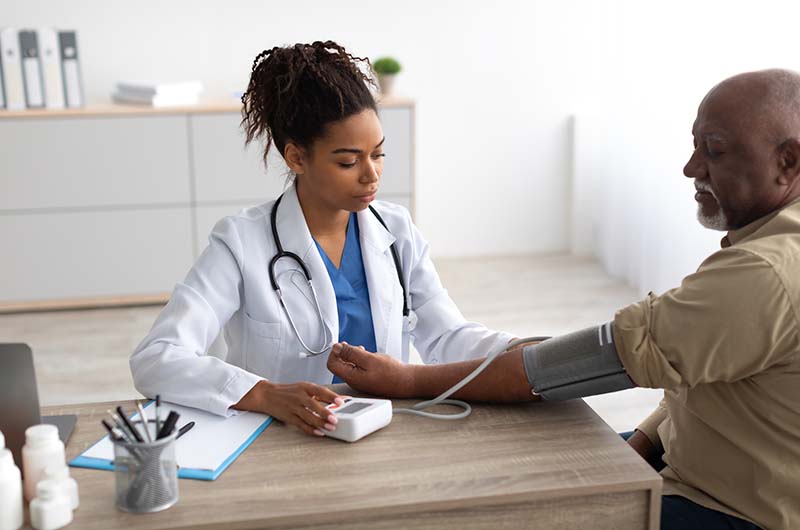Best practices for accurate at-home blood pressure monitoring

Blood pressure readings are a cornerstone of health monitoring, helping manage and prevent serious health conditions, including heart disease, stroke and dementia. High blood pressure often develops without any noticeable signs or symptoms, leaving many people unaware that they have it.
Unfortunately, various factors — ranging from stress in clinical settings to improper at-home monitoring techniques — can give inaccurate readings. Understanding the science behind these measurements and learning best practices can empower patients and clinicians to obtain reliable data, paving the way for more effective care and better health outcomes.
Nerves and your blood pressure
Health care professionals and patients have observed for decades how blood pressure readings often spike in a clinical setting. Known as “white coat hypertension,” this phenomenon affects about one in three people with high blood pressure. In 2021, research published in the journal Hypertension shed light on the physiological roots of this effect.
Dr. Guido Grassi, professor of internal medicine at the University of Milano-Bicocca, and his colleagues led the study, revealing significant differences in blood pressure and nerve activity depending on a health care professional’s presence. He says the researchers observed a significant decrease in the body’s alarm response when a doctor was absent.
According to Dr. Meena Madhur, chief in the Division of Clinical Pharmacology and associate professor of medicine with a secondary appointment in the Department of Anatomy, Cell Biology, and Physiology at Indiana University, this response is reminiscent of encountering a threat in the wild. “If you’re out in the wild and a bear was charging after you, you’d want your blood vessels in your skin, for example, to constrict and the blood vessels in your muscles to dilate to provide more blood flow to those organs so that you can run really fast,” Madhur said.
In the study, the researchers saw the reaction cause systolic blood pressure and heart rate to rise, highlighting how the sympathetic nervous system, which is responsible for fight-or-flight reactions, plays a significant role in blood pressure levels, as well as the importance of minimizing stressors during blood pressure readings. “Measurements without a doctor’s presence may better reflect true blood pressure values,” Grassi said, reinforcing the need for calm and consistent conditions for those monitoring their blood pressure at home.
Accurate at-home monitoring
At-home blood pressure monitoring is increasingly recommended by experts, including the American Heart Association and American Medical Association. However, it’s not as simple as putting on a cuff and pressing a button. Following these five tips can help boost the accuracy of your at-home readings:
- Choose the right device. Start with a validated upper arm cuff, which is more reliable than wrist monitors. Resources such as validatebp.org and stridebp.org provide lists of validated devices. Ensure the cuff size fits your arm, since improper sizing can give inaccurate results.
- Prepare properly. Avoid caffeine, exercise and smoking for at least 30 minutes before taking a reading. Empty your bladder and wait 30 minutes after a meal. Sit quietly for five minutes without distractions.
- Use the correct technique. Sit in a chair with back support and make sure your feet are flat on the ground and your arm is supported at heart level. Avoid talking or moving during the measurement. Take two readings at least one minute apart and record the results.
- Timing matters. Blood pressure varies throughout the day, typically peaking in the morning. Experts recommend taking two readings at least one minute apart in the morning before taking medications and in the evening before going to bed over a week to identify patterns. Share this log with your health care professional at your next appointment for a more comprehensive view of your blood pressure.
- Use proven methods. A focus on accuracy is particularly essential as blood pressure monitoring technology evolves. While smartwatches and cuffless devices hold promise, most are not yet validated.
Blood pressure readings, whether taken at home or in a clinic, are important indicators of cardiovascular health. Patients and clinicians can work together to ensure accurate and actionable results by understanding the factors that can affect blood pressure measurements and following expert guidelines for proper blood pressure monitoring.





